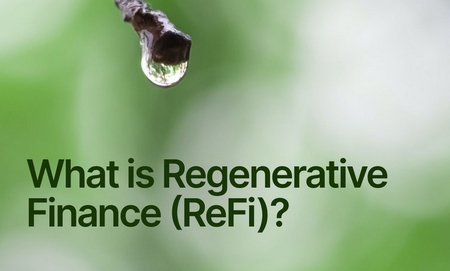What is Regenerative Finance (ReFi) and how is it different from Decentralized Finance(DeFi)?

The unprecedented pressure that regulators have been putting on the crypto business in its various forms of late, from centralized exchanges to bank working with cryptocurrencies, can explain for a number of reasons. This partly due to the collapse of Terra and FTX, and partly likely due to plans to gain a foothold in CBDC adoption, as has happened in China. Be that as it may, the previous repressive measures mean that investors are increasingly relying on decentralized financing, which is also experiencing rapid development in the crypto winter. DEX and liquid staking services are seeing steady growth. According to Messari, the native platform token the Injective Protocol (INJ), the governance token of the decentralized exchange dYdX (DYDX) and the liquid string service Lido showed the best momentum at the beginning of 2023.
In retrospect, DeFi was created in part to address the inability of bank and centralized crypto financial institutions to provide a transparent and independent financial system.
Today, DeFi continues to evolve despite the challenges and collapse sf the bear market. Developers continue to develop new services and investor invest in startups. It's worth noting decentralized finance isn't just expanding in the purely commercial space.
We’ve written about some exciting DeFi projects for 2021, such as Decentralized Science (Desai). This is a movement committed to leveraging blockchain technology and Web 3.0 capabilities to enhance the transparency and non-disclosure of scientific research and development. Developing the centre. . . . .
Regeneration financing (ReFi) may be the new trend of the year. This is a new approach to finance that uses blockchain and Web 3.0 technology to combat climate change, environmental protection, biodiversity and to build a better and more sustainable financial system.
The Refi project aims to attract investment in projects set by the SDGs (Sustainable Development Goals) set by the United Nations, as DeFi develops open and accessible financial markets and removes the barriers of the traditional financial system. For example, ReFi aims to use ReFi-based venture capital to create integrated solutions that accelerate the journey towards a low-carbon economy. This not only enhances physical rewards, but can also improve the environment and solve important social problems. They also help with solutions. Difficult.
ReFi uses DeFi’s advanced social and organizational approach based on the token economy and DAOs (Decentralized Autonomous Organizations). A DAO is a type of organization whose members can use DAO signals to determine the future direction of the project. For example, investing in development, documentation, marketing, community management and so on. Members collectively own DAO tokens and are eager to increase their value.
Another key element of ReFi is engagement. ReFi projects are designed so that everyone can get involved and take advantage of the opportunities.
Currently, there are many blockchains that focus on support and innovation.
Current trends in the REFI sector are coupled with increased transparency in the global carbon offset market. That’s because despite the establishment of reporting standards for the sector, there is a healthy scepticism within the community about the fairness of the distribution of funds.
Cosmos-based Regen Network is focused on helping China’s landowning community reduce their digital carbon emissions.
Additionally, Klima DAO (KLIMA) has created a tokenized carbon compensation system. The project code has compensated CO2 reduction units. The cost of a “Green” switch is $0.01 less than the standard transaction cost. Several projects have been launched on the Cello blockchain. For example, Flow Carbon creates carbon credit tokens that are recorded on the blockchain, facilitating the return of funds to projects that have expired.
Despite the potential for geopolitical and economic turmoil in the near future, we hope that these efforts will gain even more attention and that blockchain and cryptocurrencies will have a positive impact on the world around us.2023 could be the year of ReFi if it proves possible.
You can also familiarize yourself with fraudulent brokers.





Post a Comment